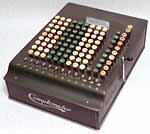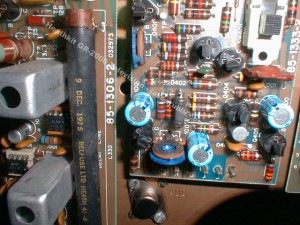Rich Reflection on the article, “As We May Think,” by Vannevar Bush, published in The Atlantic in July 1945.
I had not initially noted the date of Bush’s article, but was prompted to check it when the introductory paragraph spoke of the war coming to an end and peace approaching. The date was certainly significant to the reading of the piece. Bush was concerned that although there were exciting research and new discoveries, it was difficult to locate the information to assist others in their own research. So much information was being generated, but there was not an easy or clear way to unearth the information.
The bulk of the article was an extremely interesting examination of what were then current innovations, and the directions that Bush could foresee them going. He said that in previous times, complexity and unreliability were synonymous, but that, “The world has arrived at an age of cheap complex devices of great reliability; and something is bound to come of it.” If this had been a work of fiction, we would say he had just provided some foreshadowing to his writing.
Bush began with progress in photography. Almost everything he wrote about is in existence in an improved manner today. He also mentioned facsimile transmissions, which surprised me because I didn’t realize that had been invented that long ago. He went on to discuss television features, which are far improved today.
As I read, I began to feel like a bit of an artifact myself! When Bush described the changes in the process of televisions, I recalled a nostalgic childhood time in the mid-1960s. My dad was an electrical engineer and when color TVs first came out, they were terribly expensive. We could not afford one, but Dad did buy a Heathkit, a color television that he could put together himself. I recall his many hours of soldering resistors to circuit boards. Most of the resistors were small and brown with 3 or 4 colored stripes of red, blue, white, or yellow going around them. I would sometimes assist by handing him the requested resistor with the correct color band order.
Flickr user Jason Rubik posted his photos of a Heathkit and this one shows the resistors I recall:
 Other memories that make me feel ancient are the calculators we were required to learn in college. I don’t recall the name, but it seems that they looked like this, although surely this is too ancient!
Other memories that make me feel ancient are the calculators we were required to learn in college. I don’t recall the name, but it seems that they looked like this, although surely this is too ancient!
My first camera was called a Brownie and had been my mom’s when she was young. My parents ‘ photos became slides shown with a projector and a tray for loading them (carousels came later). We attended travelogues at the high school where community members would present slideshows of their travels. Our rotary telephone was a party line and our number was simply 2914. To call our relatives in another town we would ask the operator to dial Mayfair (and some numbers). Enough nostalgia.
Bush goes on to talk about the amount of storage space that microfilm takes, the cost of creating, mailing, and printing the microfilm. I am probably a bit of a dinosaur myself because I printed this article so that I could write my notes and underlines on it. I realize there is an app for that, but until I learn it, I am most efficient with my old method.
Bush’s vision of a future investigator in his laboratory is amazingly accurate (part 3 of article). The author‘s predictions put me in mind of smart homes, tablets in use at the checkout , debit card sales, simple Excel logic formulas to extrapolate information from a database.
In part 6 Bush says, “Our ineptitude in getting at the record is largely caused by the artificiality of systems of indexing….The human mind does not work that way. It operates by association.” Today’s search engines have solved that problem!
Bush’s description of a “memex” is remarkably accurate. In part 7 Bush continues, “…associative indexing, the basic idea of which is a provision whereby any item may be caused at will to select immediately and automatically another. This is the essential feature of the memex. The process of tying two items together is the important thing.” This is certainly apparent in today’s search engines, or with online purchases, or reading choices.
Bush describes the user building a trail of his interests through a maze of materials, associated in various ways (I thought of prezis).
In part 8 Bush describes a user with access to “the associated opinions and decisions of his whole experience, and of the experience of friends and authorities.” He envisions “a new profession of trail blazers, whose who find delight in the task of establishing useful trails through the enormous mass of the common record. The inheritance from the master becomes, not only his additions to the world’s record, but for his disciples the entire scaffolding by which they were erected.”
His next description of access to information through methods other than tactile is certainly present in today’s medical world.
I agree with Bush that man’s “excursions may be more enjoyable if he can reacquire the privilege of forgetting the manifold things he does not need to have immediately at hand, with some assurance that he can find them again if the prove important.”
TopMedia has posted the youtube video, “10 Future Technologies That Will Change the World.” This is just one example of many visions of what is to come.
Michael Zappa has created several infographics with his vision of the near future in technology. http://www.example-infographics.com/envisioning-the-near-future-of-technology/
Some of my classmates may still be around fifty years from now and they will have quite the stories to tell.
